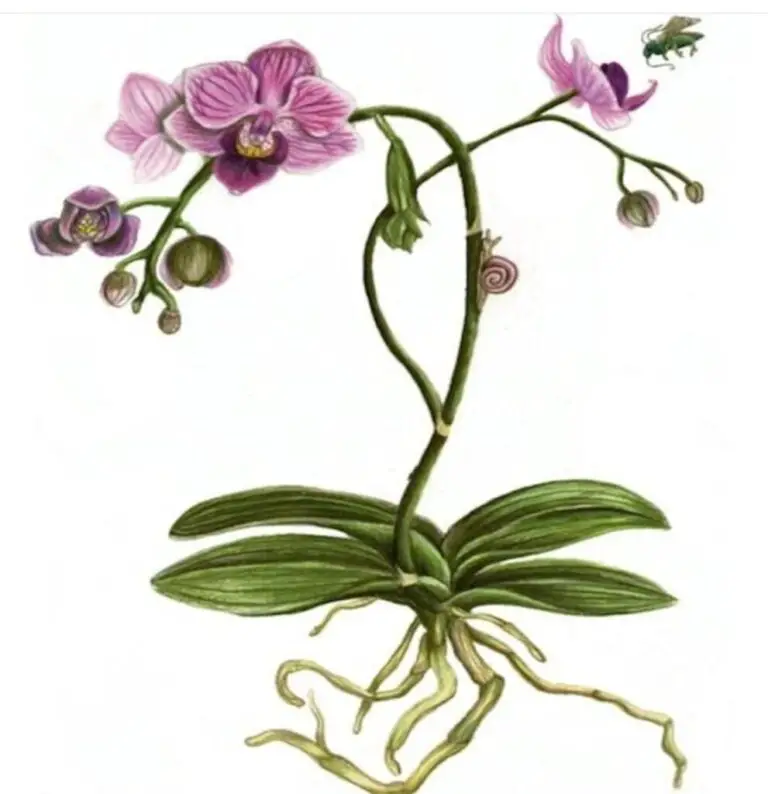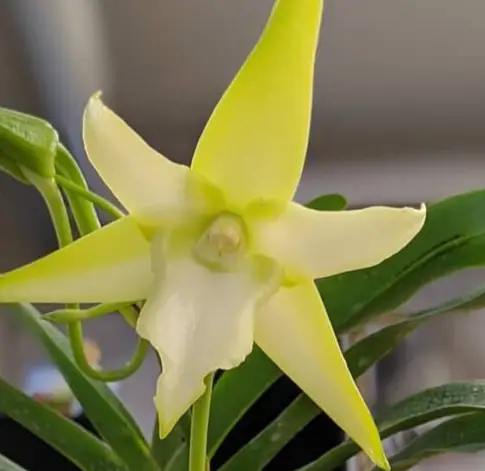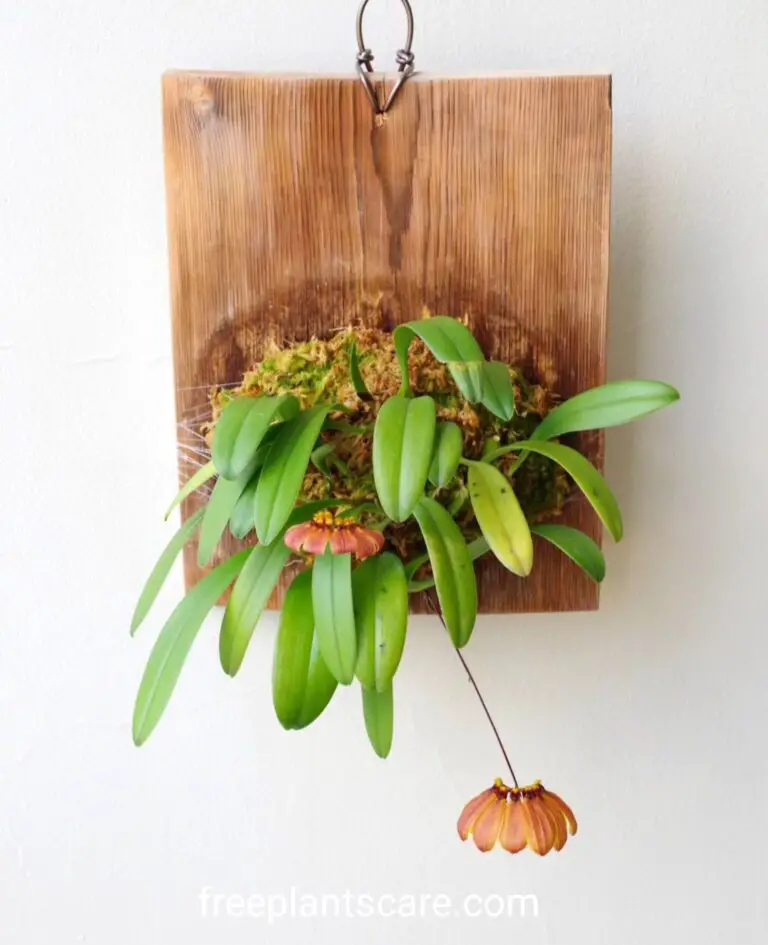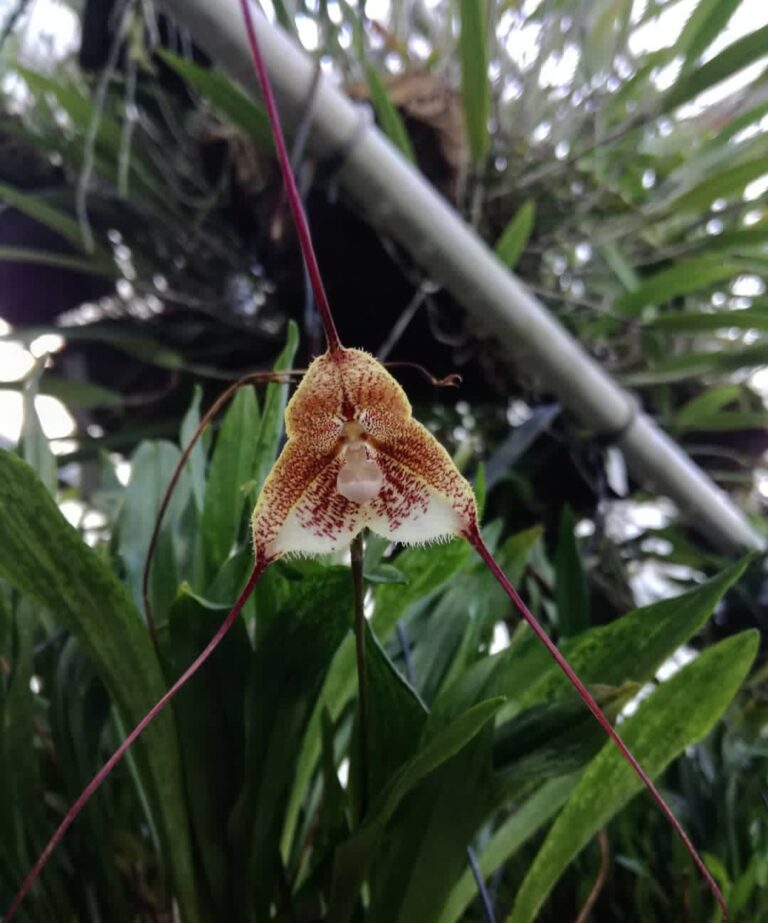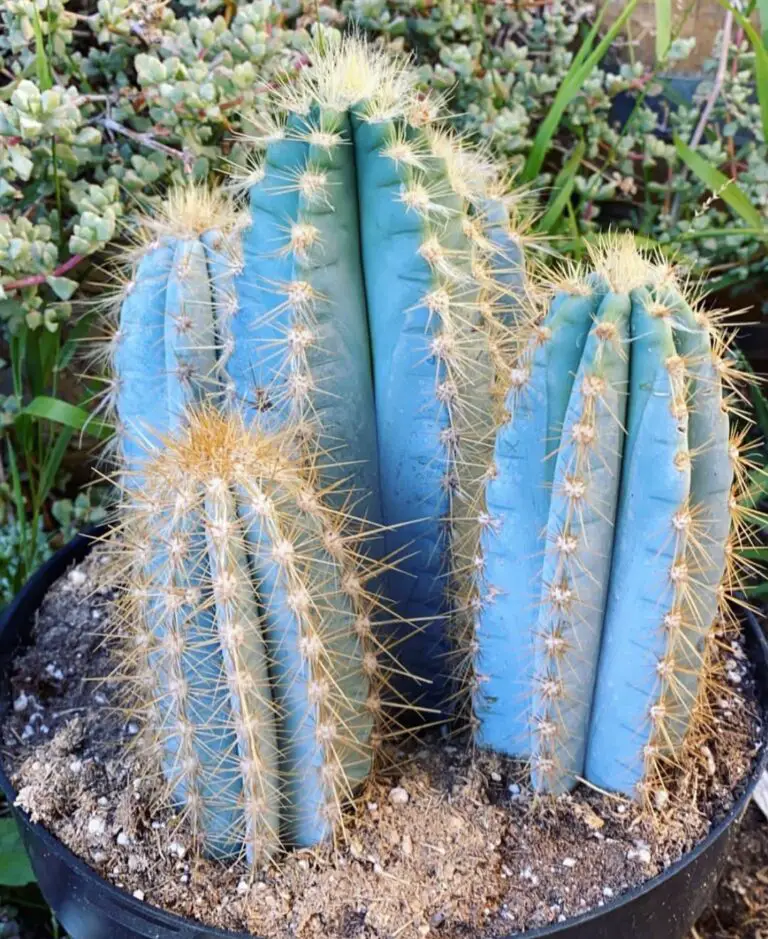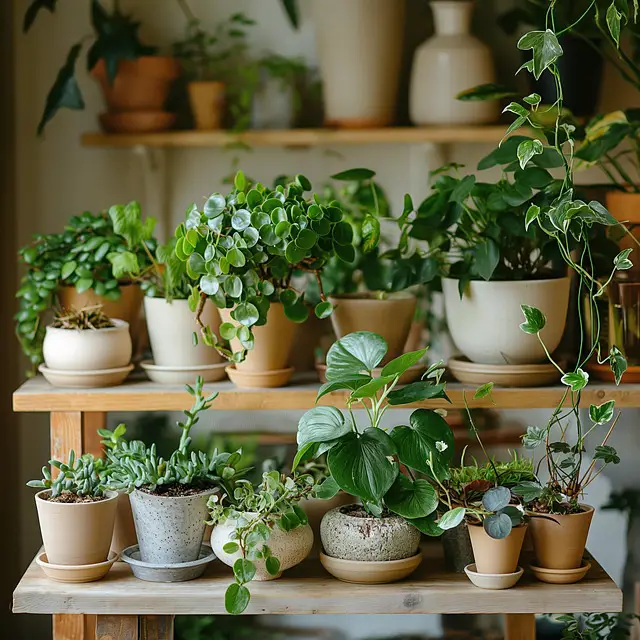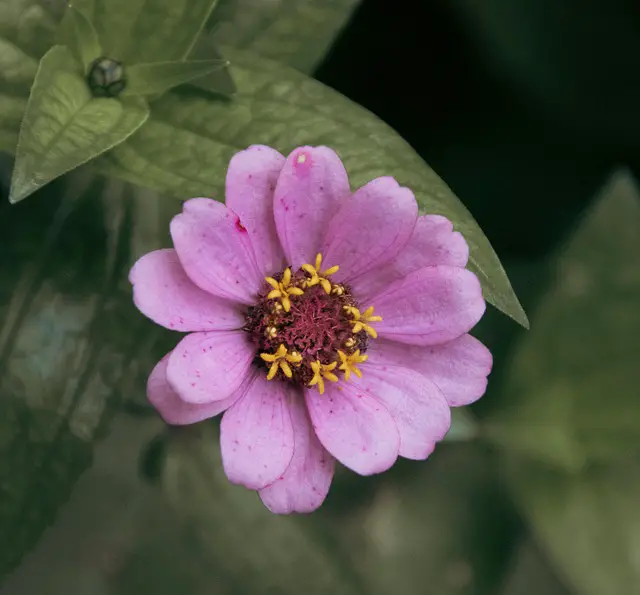Orchid leaves twisting or curling is more than just a cosmetic issue—it’s often a signal that your orchid is under some form of stress. For many plant lovers, especially those new to orchids, watching those once-smooth, flat leaves start to distort can be worrying. But don’t panic. Orchids are resilient plants, and with the right care and knowledge, most leaf problems can be corrected before they cause lasting damage.
Orchids are tropical plants with specific needs, and even slight changes in their environment can cause noticeable reactions. Curling or twisting leaves may point to a variety of causes, ranging from inconsistent watering habits and low humidity to pest infestations, root damage, or even nutrient imbalances. The key is to accurately diagnose the problem early and apply the correct solution tailored to the orchid’s particular species and growing conditions.
In this article, we’ll guide you through 7 of the most common reasons why orchid leaves twist or curl—and offer expert solutions to help you treat and prevent these issues. Whether your orchid is a gift from a loved one or a cherished part of your collection, understanding what your plant is trying to tell you through its leaves will help you care for it with confidence and success.

- 1 1. Lighting Issues: When Your Orchid Twists Toward the Sun
- 2 2. Watering Habits: Too Little, Then Too Much
- 3 3. Low Humidity: The Hidden Culprit Behind Leaf Curl
- 4 4. Physical Obstructions: When Growth Gets Blocked
- 5 5. Pests: Tiny Invaders, Big Damage
- 6 6. Fusarium Wilt: The Fungal Threat
- 7 7. Genetics: Sometimes, It’s Just Nature
- 8 Final Thoughts: Don’t Sweat a Curl
- 9 FAQs: Orchid Leaves Twisting or Curling
1. Lighting Issues: When Your Orchid Twists Toward the Sun
When orchid leaves twist or curl toward one side, it often means they’re reaching for light. Because they are phototropic, orchids grow in the direction of light.If your orchid only gets light from one direction—like a nearby window—it may stretch its leaves unnaturally, resulting in a permanent twist or curl over time.
You may also notice new leaves growing thinner, longer, and paler than usual. This is a sign that your orchid is not receiving enough light. Rotating the plant frequently can make the problem worse, as the leaves will keep adjusting direction with each move, hardening into unusual positions.
Solution: Place your orchid where it can receive consistent, indirect light from one direction. Avoid rotating it often and consider supplementing with a full-spectrum grow light if needed. Stable lighting conditions will help new leaves grow straight and healthy while keeping existing ones from twisting further.
2. Watering Habits: Too Little, Then Too Much
Watering inconsistencies are a common cause of leaf curl in orchids. If you let your orchid go too long without water, its leaves and roots begin to dehydrate. Then, when you suddenly soak it again, the leaf cells can rehydrate too quickly—causing uneven expansion and leading to twisting or curling shapes.
In many cases, the damage is minor and purely aesthetic. But if the cycle of over-drying and over-watering continues, the stress can slow growth and reduce blooming. You’ll also notice the leaves becoming limp, wrinkled, or leathery, which indicates that the plant isn’t absorbing water efficiently.
Solution: Stick to a consistent watering routine.As a guide, use the pot’s weight or the potting media’s dryness. In general, orchids like to become a little bit dry in between waterings.Rehydrate dehydrated orchids slowly, and avoid shocking them with too much water all at once.
3. Low Humidity: The Hidden Culprit Behind Leaf Curl
Low humidity is another subtle cause of leaf curling. Orchids thrive in tropical environments with high humidity levels, usually between 40% and 80%. In dry indoor air—especially during winter—leaves lose moisture faster than they can absorb it, leading to curling, brittleness, or dull coloration over time.
The lack of humidity can also dry out aerial roots, making them turn brittle or gray. If new leaves curl at the edges or seem thin and underdeveloped, that’s a strong indicator of insufficient humidity. These symptoms can worsen if combined with poor airflow or inadequate watering practices.
Solution: Use a digital hygrometer to monitor indoor humidity levels. Set up a humidity tray, mist your orchid regularly, or use a cool-mist humidifier nearby. The goal is to keep the air around your orchid comfortably moist—not wet—to help the plant absorb water through both roots and leaves.
4. Physical Obstructions: When Growth Gets Blocked
Sometimes, orchid leaves twist simply because they’re growing against a physical barrier. If an orchid leaf grows while pressing against a windowpane, wall, or another plant, it may bend or curl to accommodate the obstacle. Once hardened, the leaf will retain its unusual shape even if the obstacle is removed.
This kind of leaf deformation is purely physical and usually doesn’t signal any deeper problem. However, it can be frustrating if you’re trying to maintain a symmetrical or well-shaped orchid. This issue is common in crowded plant displays or when placing orchids too close to indoor walls or furniture.
Solution: Make sure your orchid has enough space to grow freely. Don’t crowd it among other plants or near surfaces that might hinder leaf development. Giving the leaves room to stretch will help prevent mechanical curling. While existing twisted leaves won’t uncurl, new ones should grow in straighter.
5. Pests: Tiny Invaders, Big Damage
Insect pests like aphids, mealybugs, and scale can also cause curling leaves. These bugs feed on the orchid’s sap, weakening the plant and distorting its natural shape. In addition to curling, you may notice sticky residue (called honeydew), white cottony clumps, or brown scale shells on the leaves and stems.
As the pests drain nutrients from the plant, the tissue can become misshapen or sunken. Over time, leaf health declines, and the plant becomes more vulnerable to secondary infections like mold or fungus. Pest damage can also trigger stunted growth and cause buds or flowers to drop prematurely.
Solution: Immediately isolate any infested orchids. Use rubbing alcohol on a cotton swab to remove visible pests. For widespread infestations, use insecticidal soap or neem oil and repeat the treatment weekly. Be thorough with each application, especially on leaf undersides and near the crown, where pests like to hide.
6. Fusarium Wilt: The Fungal Threat
Fusarium wilt is a more serious problem that can cause curling leaves, discoloration, and ultimately death. This fungal disease attacks from within, blocking the plant’s ability to transport water. Even if you water your orchid regularly, affected tissues can’t absorb moisture, leading to wilting, curling, and rotting roots or pseudobulbs.
You may notice leaves curling inward, turning yellow, or developing dark rings at the base of the plant. Unfortunately, Fusarium spreads quickly, especially through dirty pruning tools or contaminated potting mix. Early detection is key to saving your orchid and preventing the fungus from spreading to other plants.
SOLUTION: Immediately remove any infected tissue and sterilize all tools before and after cutting. Use a fungicide like Physan 20 or Thiomyl as directed. Isolate the orchid to protect the rest of your collection. If the infection is severe, it may be best to dispose of the plant altogether.
7. Genetics: Sometimes, It’s Just Nature
Not all curling is bad. Some orchids, especially hybrids of species like Cattleyas or Oncidiums, naturally grow twisted or arching leaves. If your orchid shows healthy roots, strong pseudobulbs, and regular flowering, a bit of leaf curl is nothing to worry about—it’s simply part of its genetic makeup.
Leaf shape can vary even within the same species due to slight genetic differences. As long as your orchid is growing vigorously, producing flowers, and shows no signs of pests or disease, a curled leaf or two is not cause for concern. Embrace your orchid’s unique personality.
Solution: Continue your regular care routine. There’s no need to intervene if everything else about the plant seems healthy. Focus on supporting the plant’s natural growth habits and enjoy its individuality. Nature doesn’t always follow straight lines—and that’s part of what makes orchids so fascinating.
Final Thoughts: Don’t Sweat a Curl
In most cases, curling orchid leaves are not a crisis but a signal. Whether it’s a nudge toward better lighting, more consistent watering, or a reminder to check for pests, curled leaves offer clues to your orchid’s health. The key is to observe closely, act early, and stay consistent.
Remember, orchids thrive with routine and gentle care.Your plant’s health can be significantly impacted by even little changes to its surroundings.By tuning in to your orchid’s needs, you’ll not only prevent leaf curl—you’ll create the perfect conditions for blooming success and long-term vitality.
FAQs: Orchid Leaves Twisting or Curling
1. Why are my Orchid Leaves Twisting or Curling suddenly?
Sudden changes in your orchid’s environment, such as temperature drops, low humidity, or improper watering, can cause Orchid Leaves Twisting or Curling. These sensitive plants react to stress quickly, and leaf distortion is one of the most visible signs something is wrong in their care routine.
2. Can overwatering lead to Orchid Leaves Twisting or Curling?
Yes, overwatering is a common cause of Orchid Leaves Twisting or Curling. Excess moisture leads to root rot, which prevents proper nutrient absorption. This stress manifests in the leaves, which may curl, twist, or become limp. Ensure proper drainage and water only when the medium is nearly dry.
3. Does nutrient deficiency cause Orchid Leaves Twisting or Curling?
Absolutely. A lack of essential nutrients, especially calcium or magnesium, can cause Orchid Leaves Twisting or Curling. These minerals support healthy leaf and root development. If your orchid lacks them, the leaves may grow unevenly or become distorted, signaling it’s time to supplement with a balanced orchid fertilizer.
4. How does lighting affect Orchid Leaves Twisting or Curling?
Insufficient or excessive lighting can lead to Orchid Leaves Twisting or Curling. Orchids prefer bright, indirect light. Too little causes weak, misshapen leaves, while too much light may scorch and curl them. Monitor light levels carefully and reposition your plant if necessary to maintain optimal growing conditions.
5. Could pests be behind my Orchid Leaves Twisting or Curling?
Yes, pests like spider mites, aphids, and thrips often lead to Orchid Leaves Twisting or Curling. These insects feed on leaf sap, weakening the plant and causing distortion. Regularly inspect your orchid, especially under the leaves, and treat infestations promptly using neem oil or insecticidal soap.
6. Is Orchid Leaves Twisting or Curling a sign of disease?
It can be. Fungal or bacterial infections may cause Orchid Leaves Twisting or Curling, along with discoloration or soft spots. Infected plants often require isolation and treatment with fungicides or bactericides. Good airflow, clean tools, and dry leaves help prevent these diseases in the first place.
7. How can I prevent Orchid Leaves Twisting or Curling in the future?
To prevent Orchid Leaves Twisting or Curling, maintain consistent care: use filtered light, proper watering techniques, balanced nutrition, and pest control. Regular monitoring helps catch problems early.The key to cultivating healthy orchids with vibrant, smooth leaves that don’t twist or curl is creating the ideal climate.
8. What role does humidity play in Orchid Leaves Twisting or Curling?
Low humidity can directly contribute to Orchid Leaves Twisting or Curling, especially in homes with dry air. Orchids thrive in 50-70% humidity. When levels drop, leaf tissues lose moisture, causing curling or wrinkling. Use a humidity tray, misting, or humidifier to maintain proper levels around your plant.
9. Should I trim Orchid Leaves Twisting or Curling?
In general, avoid trimming Orchid Leaves Twisting or Curling unless the leaf is damaged or diseased. If the leaf is healthy but misshapen, focus on correcting care issues. Trimming should only be done with sterile tools and as a last resort, since leaves contribute to photosynthesis and plant health.
10. Can repotting help with Orchid Leaves Twisting or Curling?
Repotting can solve Orchid Leaves Twisting or Curling if the cause is related to compacted roots or decaying medium. Fresh potting mix allows better airflow and root health, reducing stress on the plant. Ensure you repot during the growing season and avoid disturbing blooming orchids unless absolutely necessary.
11. How often should I check for Orchid Leaves Twisting or Curling?
It’s best to observe your orchid weekly. Catching Orchid Leaves Twisting or Curling early allows for quick intervention, preventing long-term damage. Regular inspections also help you monitor watering needs, pest activity, and environmental changes, all of which influence your orchid’s health and leaf condition.
12. Does water quality impact Orchid Leaves Twisting or Curling?
Yes. Hard water or water containing high levels of chlorine or fluoride can result in Orchid Leaves Twisting or Curling.These substances have the potential to harm roots and interfere with nutrition intake.Use filtered, distilled, or rainwater for the best results and to maintain healthy, uncurled orchid leaves.
13. Are certain orchid species more prone to leaf curling?
Yes, some varieties are more sensitive to environmental stress. For example, Phalaenopsis and Dendrobiums may show Orchid Leaves Twisting or Curling more readily when exposed to poor care conditions. Understanding your specific orchid’s needs is vital to preventing and managing leaf problems effectively.
14. Can temperature fluctuations cause Orchid Leaves Twisting or Curling?
Sudden temperature drops or cold drafts are major triggers of Orchid Leaves Twisting or Curling.Orchids resist stress in the face of abrupt climatic change and prefer steady, warm environments. Keep your orchid away from open windows, AC units, or heaters to minimize temperature-related leaf curl.
15. What is the quickest way to fix Orchid Leaves Twisting or Curling?
There’s no instant fix, but adjusting your care routine can gradually reverse Orchid Leaves Twisting or Curling. Identify the root cause—whether it’s lighting, watering, pests, or nutrition—and address it systematically. With consistent care, new leaves should grow straight and healthy while older twisted ones remain as-is.

